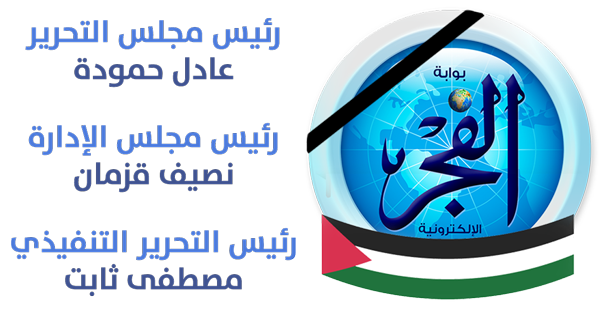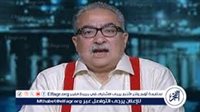Guardian: Arab artists flourishing as uprisings embolden a generation
At first glance the stones look unremarkable. Nothing about them suggests a reason for their inclusion in a contemporary art exhibition. But these stones were thrown by Egyptian military police at pro-democracy campaigners in Tahrir Square, and are indicative of how the Arab uprisings have emboldened a generation of artists across the region.
Ashraf Foda's work will go on show in Frankfurt later this month. The perception of Arab art has changed, said Reedah El-Saie, of London's Modern Islamic and Contemporary Art gallery, which represents Foda. Before the uprisings people either saw it as exotic and innocuous or steeped in the Islamic tradition; artists were wary of showing work that might be seen as too political.
But now there's an appetite to understand the context of the uprisings, and there's a real flourishing of work that's more edgy.
Inspired by her encounters with the army in Tahrir Square in the early days of the revolution, Egyptian artist Nermine Hammam has produced a group of photomontages combining photos of troops with colour-saturated picture-postcards of idyllic landscapes. Struck by the sight of the young soldiers kissing babies atop tanks, she said that her series, Uppekha, was a way to explore the frailty that crouches behind stereotypes of force, masquerading in military hardware .
Hamman is one of many Arab artists whose work have been exhibited in cities from Paris to Bamako in Mali during the past year, buoyed by the world's fascination with the uprisings.
Last year the Venice Biennale held Europe's largest ever show of contemporary Arab art, The Future of a Promise, while in London, mayor Boris Johnson presented the capital's first ever festival of contemporary Arab culture, Shubbak, in which Foda's Tahrir stones were exhibited.
Art Dubai and the United Arab Emirates' Sharjah Biennale have become major commercial art fairs, while previously unrecognised Arab artists attract record prices at auction. In October the Dubai branch of Christie's extended its autumn sale of Arab, Iranian, and Turkish art to two days to promote younger contemporary artists. Total sales amounted to $7.3m (£4.7m), of which younger artists' work accounted for $2.3m (£1.5m).
Venetia Porter, curator of Islamic and contemporary Middle Eastern art at the British Museum, said: Artists whose work fetched around £5,000 before 2005 [are] now selling for £30,000-£50,000.
Porter has included contemporary artists in her exhibition Hajj: journey to the heart of Islam, opening on 26 January, which examines the history of the pilgrimage to Mecca. The British Museum and the Victoria & Albert Museum are all expanding their collections of contemporary art from the region. The Arab spring is feeding into that interest.
She points to Egypt's selection of the artist Ahmed Basiony, shot dead in Tahrir Square in January, for its national pavilion in Venice as a sign of acceptance of political art by the region. The installation showed footage of protests filmed by Basiony days before his death, alongside a video installation of his final artistic performance at the Cairo opera house.
Many artists have become directly involved in protests; for example, the events in Change Square in the Yemeni capital Sana'a have led to the district becoming a shantytown packed with poets, musicians, actors and galleries.
Activist Atiaf Alwazir, who has become a voice of the revolution through her English-language blog, Woman from Yemen, said: The protest allowed Yemeni artists to network, and to showcase their work. Visual art will no longer be just for artists and elites like it was, it will also be connected to the people, as there are at least three art exhibits at the square.
Artist AbdulRahman Jaber, who runs a small design company in Sana'a, has been photographing the wounded people and martyrs at the protests. He said: It is not an easy thing to do art while your people are dying. The pressure is extremely exhausting.
This week a two-day summit in London at the British Museum and the Royal College of Art, bringing together collectors, museums, academics, artists and diplomats, will explore ways to support the emerging scene. Hossein Amirsadeghi, organiser of Art & Patronage: The Middle East, said: There's a large number of talented creative people in the region who have nowhere to go except the west.
Hans Ulrich Obrist, director of international projects at the Serpentine gallery, who is chairing a session at the summit, said there was a desire to support museums and art schools in the region.
He said: There is clearly huge potential for such institutions to emerge. There are so many initiatives [that] have been underground or secret, and so many amazing practitioners.
One organisation helping to foster talent is Edge of Arabia, which will open Saudi Arabia's largest ever public contemporary art exhibition, We Need to Talk, in Jeddah on 19 January.
Co-founder Stephen Stapleton said artists in the kingdom were engaged via the internet with their peers in countries affected by the uprisings. He said: Things will open up there without there being a revolution.
He is optimistic that the uprisings will foster a commercial creative sector across the region.
The opening up of those countries will have a significant impact, because a creative economy can't flourish without freedom, he said.
There's thousands of little projects, magazines and fanzines starting up. It's those initiatives that make a creative economy, like the thousands of independent groups in east London rather than public museums like the Tate Modern.








